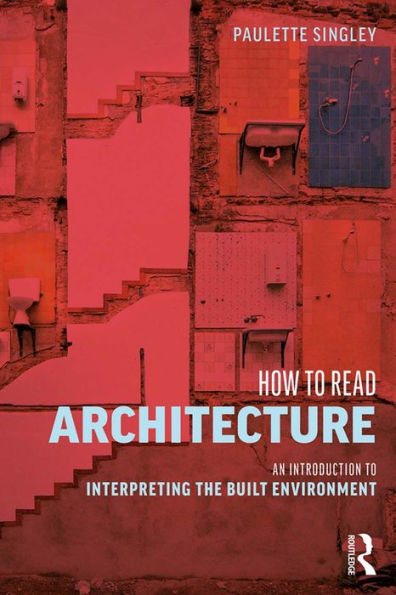How to Read Architecture is based on the fundamental premise that reading and interpreting architecture is something we already do, and that close observation matters. This book enhances this skill so that given an unfamiliar building, you will have the tools to understand it and to be inspired by it. Author Paulette Singley encourages you to misread, closely read, conventionally read, and unconventionally read architecture to stimulate your creative process.
This book explores three essential ways to help you understand architecture: reading a building from the outside-in, from the inside-out, and from the position of out-and-out, or formal, architecture. This book erodes boundaries between the frequently compartmentalized fields of interior design, landscape design, and building design with chapters exploring concepts of terroir, scenography, criticality, atmosphere, tectonics, inhabitation, type, form, and enclosure. Using examples and case studies that span a wide range of historical and global precedents, Singley addresses the complex interaction among the ways a building engages its context, addresses its performative exigencies, and operates as an autonomous aesthetic object.
Including over 300 images, this book is an essential read for both undergraduate and postgraduate students of architecture with a global focus on the interpretation of buildings in their context.
How to Read Architecture is based on the fundamental premise that reading and interpreting architecture is something we already do, and that close observation matters. This book enhances this skill so that given an unfamiliar building, you will have the tools to understand it and to be inspired by it. Author Paulette Singley encourages you to misread, closely read, conventionally read, and unconventionally read architecture to stimulate your creative process.
This book explores three essential ways to help you understand architecture: reading a building from the outside-in, from the inside-out, and from the position of out-and-out, or formal, architecture. This book erodes boundaries between the frequently compartmentalized fields of interior design, landscape design, and building design with chapters exploring concepts of terroir, scenography, criticality, atmosphere, tectonics, inhabitation, type, form, and enclosure. Using examples and case studies that span a wide range of historical and global precedents, Singley addresses the complex interaction among the ways a building engages its context, addresses its performative exigencies, and operates as an autonomous aesthetic object.
Including over 300 images, this book is an essential read for both undergraduate and postgraduate students of architecture with a global focus on the interpretation of buildings in their context.

How to Read Architecture: An Introduction to Interpreting the Built Environment
410
How to Read Architecture: An Introduction to Interpreting the Built Environment
410Related collections and offers

Product Details
| ISBN-13: | 9780429557453 |
|---|---|
| Publisher: | Taylor & Francis |
| Publication date: | 06/26/2019 |
| Sold by: | Barnes & Noble |
| Format: | eBook |
| Pages: | 410 |
| File size: | 15 MB |
| Note: | This product may take a few minutes to download. |
